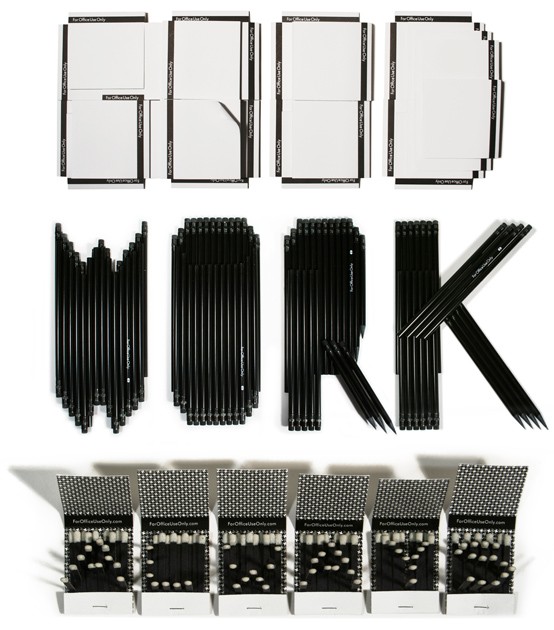Untitled Document
Post on: 4 Октябрь, 2015 No Comment

UP 538
Introduction:
Sports Stadiums + Public Subsidies:
Sports teams are important institutions within a city or region. They help connect people with places, and through this loyalty an important sense of civic pride is born. Furthermore, sports are a multi-billion dollar industry which produces revenues that can help individuals and communities prosper. In recent years dozens of new sports stadiums have been built throughout the country, with major funding coming from public subsidy. This paper aims to identify the some of the forces that have led to this trend of subsidization, and to deconstruct the arguments of both the supporters and opponents of the allocation of public funds for the construction of sports stadiums.
The Monopoly + Mobility of Sports Franchises:
Sports teams effectively act as monopolies, with leagues controlling both the number of teams and their locations. The scarcity of teams throughout the country, coupled with increased ability to move franchises at minimal cost, has dramatically impacted the bargaining power of host cities. This power shift has increased subsidies to unprecedented levels and challenged many communities to dig deeper into their pockets than they can perhaps afford. With the heavy structural barriers inherent in the development of competing professional sports leagues and the increasing mobility of our economy, the monopolistic and mobile nature of professional sports teams does not seem to be ready for reversal in the near future.
The New Age of Stadium Construction:
As power has shifted from cities to teams, franchises have embarked upon more elaborate, expensive, and profitable facilities. They offer amenities such as luxury suites, themed entertainment, lounges, and restaurants, making sporting events attractive to broader range of attendants. Cities are now expected to pay for an increasing portion of stadium costs. If they aren’t willing to contribute this share, franchises threaten to relocate to the many communities that are prepared to make these contributions.
Forms of Subsidy:
Public subsidies for stadium construction or rehabilitation come in a myriad of ways including cash payments, tax abatements, infrastructure improvements, and operating cost subsidies. Through the 1960’s these types of subsidies were virtually non-existent, but due to the aforementioned shifts in market conditions and precedents set forth by cities throughout the country, subsidies of this nature continue to grow.
Politics and Sports Stadium Subsidies:
The public has largely bought into the idea of public subsidy for sports stadiums as an economic development tool. In turn, politicians have been eager to facilitate this expenditure. When politicians help develop sports stadiums, constituents tend to believe that real progress is being made within their cities and that their elected official are �making things happen’ to generate economic growth. The question of whether this growth is real and whether it is in the best interest of the public to subsidize this growth has matured into a significant point of contention. It is important to understand the arguments of both the supporters and opponents of these subsidies in order to define whether or not these subsidies are an appropriate allocation of public funds.
Arguments for Public Subsidy of Sports Stadiums:
Job Creation + Job Multipliers:
New sports stadiums usually create jobs. Though many stadiums simply replace older facilities in another part of town, employment is usually increased at new facilities since new elaborate stadiums tend to require more staff, and prove to be more successful at increasing net expenditures originating from outside the immediate geographic area. These new expenditures minimally increase direct employment, such as stadium and franchise staff, but can significantly boost indirect employment serving neighboring shops, hotels, restaurants, and transportation. The specific local and regional job multipliers related to new stadium are highly contested, though it is clear that new stadiums tend to successfully attract spending from those outside of the region and create some new local employment. Proponents argue that as long as no better job-creation strategy is in place, these new jobs are well worth subsidizing.
Spin-off Development + Expanding the Tax Base:
Subsidies are constructed in a variety of ways, though the taxes imposed on stadium activities such as ticket, concession, and merchandise sales don’t tend to supersede the significant abatements offered directly to teams by host cities. Proponents argue that new stadiums stimulate spin-off development such as new retail establishments, restaurants, concession suppliers, and parking structures. These new developments, coupled with a boost for existing local economic players, and increased property values, generate enough of a tax base increase to pay off the initial stadium investments while laying the groundwork for a healthy and sustainable tax base.
Marketing the City:
It has been argued that through the regional and national television broadcasts of sporting events, cities are become marketed to potential tourists and investors. Supporters assert that stadiums built in the 1990s such as Oriole Park at Camden Yard (Baltimore) and Jacobs Field (Cleveland) have served as proven gateways of redevelopment for their respective cities and that the tourism produced by these new ballparks has transformed both their image and capability of attracting new investment.
Intangibles: Civic Pride
Boosting civic pride has been a primary challenge for many city leaders throughout the country. It is believed that positive attitudes towards cities improve productivity, encourage local constituents to become further invested and engaged, and attract new talent and growth. Proponents argue that enticing sports teams to relocate into cities, or building sleek new facilities for existing franchises has been a successful tool in boosting this intangible asset. Though this effect is difficult to quantify, it provides utility far beyond the cost of the subsidies.
Arguments against Public Subsidy of Sports Stadiums:
Substitution Effect:
Critics of stadium subsidies assert that the production of new stadiums promotes little, if any, new consumption. They argue that these developments provide a mere substitute for existing entertainment alternatives and that the huge costs of subsidies in no way justify this minor increase in overall entertainment spending.
Leaky Bucket Effect:
A problem associated with substituting entertainment spending from another market into sports expenditures, other than enormous development costs, lies in the fact that approximately half of the revenues collected at sporting events are distributed to franchise owners and athletes. Opponents charge that since many athletes and owners don’t necessarily live or reinvest in their host cities, it is quite possible that the substitution effect is in fact draining more revenues from the host city than alternative entertainment opportunities might produce.
Measuring Opportunity Cost:
Cities are always faced with the choices of where to invest their resources to produce the best and highest return on their public investments. Critics argue that expenditure on job training, improved transportation, or other investments have proven to outweigh the minimal economic benefits of stadium subsidies. They assert that there are always public projects with proven benefits that are in need of economic resources, and that the strong lobbying efforts of the part of stadium boosters outweigh the actual benefits produced by stadium subsidies.
Eminent Domain:
Many new stadiums are required to exercise the power of eminent domain in order to assemble the massive amount of land needed for their construction. Although land owners are supposedly compensated for their properties in these circumstances, it is common for property owners to become enraged with the communities that drive them out and choose to relocate their uprooted businesses or residences to other cities. This loss of existing constituents in local economies is another factor that opponents remind voters and local leaders to measure in calculating the actual economic benefits of new sports facilities.
Infrastructure + Maintenance Costs:
Cities are often challenged to subsidize stadiums with both infrastructural and maintenance costs. If significant taxes abatements are offered, and little spin-off development is produced, the maintenance costs associated with the stadium can provide the host city with a net loss for years to come.
Regional Benefits + Local Cost:

Opponents charge that the benefits of sports stadiums tend to be more regional than local in both the tangible and intangible terms mentioned above. Recent cases prove that it is difficult to convince regional bodies to contribute to the subsidies necessary to build new sports facilities. This brings to the forefront the problem that the cities subsidizing this economic development are unable to capture its full effects, while surrounding bodies successfully drain these benefits without incurring any of the associated costs.
Conclusions:
Measuring the True Costs + Benefits:
Deciding whether or not a city should subsidize sports stadiums can be a difficult decision for both voters and policy makers. It becomes increasingly difficult to decide these matters when lobbyists from both sides produce statistical data that is so seemingly contradictory. In order to filter through this information it is important to understand the geographic scale considered, the considerations taken in measuring opportunity costs, and the ways in which employment data is compiled. In general, it is important to commission, or study the works produced by entities that are as thorough and unbiased as possible.
Stadium Design: Site Selection, Mixing Uses, and Integrating Interests
No two cities or sites are the same. That being the case, it is critical to realize that the stadium being proposed in any given community will undoubtedly produce a different set of results than any case study that will influence your decision-making. In negotiating whether or not to subsidize construction of a new stadium, it is important to consider whether or not the proposed stadium is sited and designed in a fashion that integrates the interest of the team, the neighbors, and the city at large. It is also important to ask whether or not this facility might be able to share in some of the infrastructure costs that the city might be ready to spend on projects, and how expenditures on stadium subsidies might integrate with other public interests. With these issues properly addressed, one will be better equipped at deciding whether or not subsidizing sports stadium construction in your locale fits within the greater interests of the constituents at play.
For Further Reading :
Baade, Robert A. �Is there an Economic Rationale for Subsidizing Sports Stadiums?� Heartland Policy Study. February 1987.
Cagan, Joanna and DeMause, Neil. Field of Schemes: How the Great Stadium Swindle Turns Public Money into Private Profit. Common Courage Press, Maine. 1998.
Danielson, Michael N. Home Team: Professional Sports and the American Metropolis. Princeton University Press, New Jersey. 1997.
Euchner, Charles C. Playing the Field. Johns Hopkins University Press, Baltimore and London. 1993
Geraint, John and Sheard, Rod. Stadia: A Design and Development Guide. Architectural Press, Oxford. 2000.
Melaphinay, John C. �The Impact of Stadiums and Arenas,� Real Estate Issues. December 1996, pp.36-39
Noll, Roger C. and Zimbalist, Andrew. Sports Jobs and Taxes: The Economic Impact of Sports Teams and Stadiums. Brookings Institution Press, Washington D.C. 1997.
Rosentraub, Mark S. �The Myth and Reality of the Economic Development of Sports Arenas,� Real Estate Issues April 1997, pp. 24-29.
Shopshrine, Kenneth. The Sports Franchise Game: Cities in Pursuit of Sports Franchises, Events, Stadiums, and Arenas. The University of Pennsylvania Press, Philadelphia. 1995.
Ward, Janet. �Is the Sun Setting on Tax-Exempt Financing?� American City and County. October 1996, pp. 42-48.














